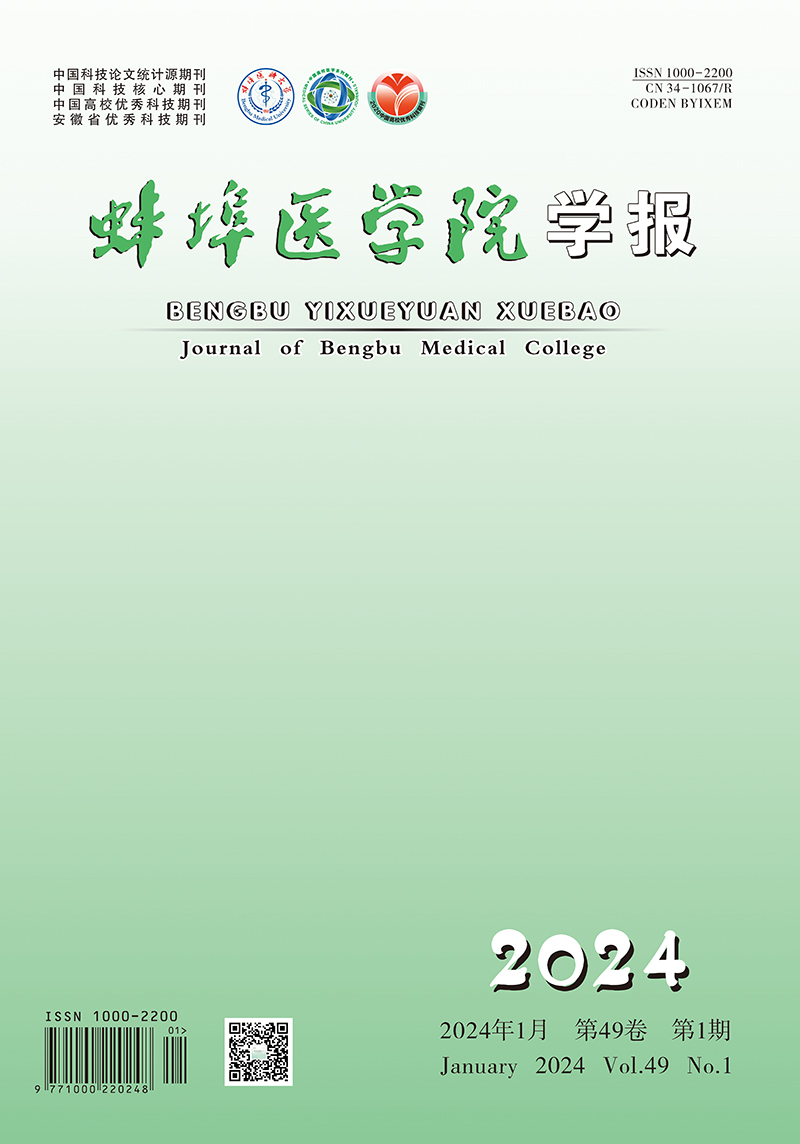-
空气质量对人体健康的影响越来越受到关注,研究[1-3]发现, 温度变化、空气污染使喘息性疾病发病风险增加。空气动力学直径≤2.5 μm的细颗粒物(PM2.5)是空气污染的主要污染物之一,PM2.5可引起肺部炎症,增加气道高反应[4],导致呼吸系统疾病发病率增加。儿童呼吸系统发育尚不完善,相对成人而言,儿童更易受到PM2.5暴露造成的危害,导致儿童呼吸系统疾病发生。上海市东部地区属重工业地区,人口密度高、机动车聚集等因素均造成空气质量欠佳[5]。研究[6]显示,空气污染能增加哮喘儿童的日就诊量。目前,上海东部地区空气质量对喘息儿童日就诊量的影响尚未受到关注[7]。因此,我们通过分析上海东部地区空气质量情况对喘息儿童日就诊量的影响,以期为区域性气候治理提供参考。
HTML
-
收集2019年1月1日至2019年12月31日上海市东部地区某三甲医院喘息儿童的就诊数据。依据《疾病和有关健康问题的国际统计分类(第十次修订本)》(ICD-10)将疾病编码为J00-J99者纳入为研究对象。
-
上海东部地区气象数据来自上海市气象局数据共享平台,包括日平均温度、相对湿度;空气质量数据来源于上海市生态环境局监测平台,按照《环境空气质量标准》(GB3095-2012)评价,包括PM2.5(日平均)、PM10(日平均)、SO2(日平均)、NO2(日平均)、O3(采用日最大8 h平均值)。
-
采用Spearman相关分析和广义相加模型。
1.1. 一般资料
1.2. 气象数据收集
1.3. 统计学方法
-
2019年上海市东部地区PM2.5日平均浓度35.88 μg/m3,PM2.5浓度超过国家一级标准(35 μg/m3)125 d,超过国家二级标准(75 μg/m3)27 d。PM10、SO2及NO2的日均浓度分别为48.03、6.86、42.75 μg/m3,均未超出国家二级标准。2019年上海东部地区气象情况与空气质量见表 1。
指标 P25 P50 P75 最小值 最大值 气象情况 温度/℃ 9.6 17.5 23.5 2.5 33.0 相对湿度/% 27 33 43 7 63 污染物浓度/(μg/m3) PM2.5 20.0 31.0 44.7 7.0 123.0 PM10 30.0 40.0 61.0 9.0 212.0 SO2 5.0 6.0 8.0 3.0 16.0 NO2 29.0 41.0 53.0 5.0 115.0 O3 64.0 86.0 108.0 5.0 215.0 -
以时间序列为横坐标,以逐日喘息儿童就诊情况为左纵坐标,以PM2.5日均浓度为右纵坐标,绘制时间序列图,结果显示,PM2.5浓度在2019年2月和12月出现峰值(分别为123、114 μg/m3),2019年8-9月大气PM2.5浓度最低(均为7 μg/m3),而同期喘息儿童就诊的两个峰值也在2月和12月(见图 1)。
-
相关分析显示,PM2.5与PM10、SO2、NO2、O3均呈正相关关系(P < 0.05),与湿度和温度均呈负相关关系(P < 0.05),将SO2、NO2、O3、湿度和温度纳入模型进行控制(见表 2)。
指标 PM2.5 PM10 SO2 NO2 O3 温度 湿度 PM2.5 1.000 0.780* 0.601* 0.658* 0.195* -0.270* -0.015* PM10 — 1.000 0.745* 0.606* 0.375* -0.256* -0.126* SO2 — — 1.000 0.697* 0.216* -0.379* -0.280* NO2 — — — 1.000 -0.042 -0.415* -0.158* O3 — — — — 1.000 0.268* 0.095 温度 — — — — — 1.000 0.223* 相对湿度 — — — — — — 1.000 *P < 0.05 -
结果显示,PM2.5日均浓度与Lag 0~6 d喘息儿童日就诊量有关,不同滞后时间下,PM2.5浓度每升高10 μg/m3,对lag 1 d时喘息儿童日就诊量影响最大,超额危险度(ER)为4.251%,95%CI为0.824%~7.796%。2019年上海市东部地区PM2.5浓度每升高10 μg/m3对日就诊量在不同滞后时长的效应见表 3。
滞后日/d B SE RR(95%CI)/% ER(95%CI)/% Lag 0 0.022 0.017 1.022(0.988~1.057) 2.183(-1.193~5.673) Lag 1 0.042 0.017 1.043(1.008~1.078) 4.251(0.824~7.796) Lag 2 0.021 0.018 1.021(0.987~1.057) 2.144(-1.336~5.746) Lag 3 -0.015 0.019 0.985(0.949~1.022) -1.509(-5.109~2.226) Lag 4 0.010 0.018 1.010(0.975~1.046) 1.029(-2.452~4.635) Lag 5 0.034 0.018 1.035(1.000~1.071) 3.470(-0.045~7.108) Lag 6 0.005 0.017 1.005(0.972~1.039) 0.493(-2.769~3.865) *示PM2.5浓度每升高10 μg/m3时喘息儿童日就诊量ER 单污染物模型和多污染物模型中,大气PM2.5日均浓度对喘息儿童日就诊量影响的ER值均有统计学意义。根据单污染物模型滞后效应分析,PM2.5暴露对日就诊量的影响显示,PM2.5浓度每升高10 μg/m3,日就诊量ER(95%CI)为4.251%(0.824%~7.796%)。选择影响最大的Lag 1 d时效应拟合多污染物模型,在双污染物质模型分别引入SO2、NO2及O3,大气PM2.5浓度每升高10 μg/m3,引起日就诊量ER(95%CI)分别为5.442%(0.747%~10.355%)、5.371%(1.378%~9.522%)和4.535%(1.481%~7.682%);在三污染物模型中,同时引入SO2和NO2、SO2和O3及NO2和O3,PM2.5浓度每升高10 μg/m3,引起日就诊量ER(95%CI)分别为5.953%(1.101%~11.038%)、4.948%(0.144%~9.982%)和4.948%(0.144%~9.982%);四污染物模型显示,PM2.5浓度每升高10 μg/m3,引起日就诊量ER(95%CI)为5.894%(1.028%~10.994%)(见表 4)。
污染物模型 B SE RR(95%CI)/% ER(95%CI)/% 单污染物模型 PM2.5 0.042 0.017 1.043(1.008~1.078) 4.251 (0.824~7.796) SO2 -0.033 0.015 0.968(0.940~0.997) -3.210(-6.039~-0.296) NO2 -0.020 0.017 0.980(0.948~1.013) -1.980(-5.155~1.301) O3 0.003 0.012 1.003(0.979~1.027) 0.260(-2.102~2.680) 双污染物模型 PM2.5+SO2 0.053 0.023 1.054(1.007~1.104) 5.442(0.747~10.355) PM2.5+NO2 0.052 0.020 1.054(1.014~1.095) 5.371(1.378~9.522) PM2.5+O3 0.044 0.015 1.045(1.015~1.077) 4.535 (1.481~7.682) 三污染物模型 PM2.5+SO2+NO2 0.058 0.024 1.060(1.011~1.110) 5.953(1.101~11.038) PM2.5+SO2+O3 0.048 0.024 1.049(1.001~1.100) 4.948(0.144~9.982) PM2.5+ NO2+O3 0.048 0.024 1.049(1.001~1.100) 4.948 (0.144~9.982) 四污染物模型 PM2.5+SO2+NO2+O3 0.057 0.024 1.059(1.010~1.110) 5.894(1.028~10.994) *示PM2.5浓度每升高10 μg/m3时喘息儿童门诊就诊人次ER
2.1. 一般情况
2.2. PM2.5浓度与喘息儿童的时间序列分析
2.3. 空气质量与气象指标相关性
2.4. 广义相加模型分析
-
PM2.5是指环境空气中空气动力学当量直径≤2.5 μm的颗粒物,可直接穿透呼吸道肺泡上皮细胞进入血液循环,在血液中释放生物活性物质,进而随血液循环作用于全身,促进炎症发生,这些炎症介质趋化并激活炎症细胞,使之长期存在肺内,使肺内炎症持续存在。同时,空气污染物的浓度升高会导致气道高反应性,引发呼吸系统疾病。
本研究发现,在Lag 1 d时PM2.5浓度对喘息性儿童影响最大,即PM2.5浓度每升高10 μg/m3,次日日就诊喘息儿童ER(95%CI)为4.251%(0.824%~7.796%),与近年国内外[8-11]关于空气污染引发儿童呼吸系统疾病的研究结论一致。研究[12]指出,全球13%儿童哮喘的发生可能与交通相关的空气污染有关。随着空气污染加重,PM2.5浓度每升高10 μg/m3对急性喘息发作儿童日就诊量影响增大,与国外多数研究[13-15]结果相似。2019年,上海市环境空气质量指数(AQI)优良时间为309 d,优良率84.7%,环境空气质量持续改善,但O3在污染日中占比高达46.4%,污染仍较突出。本研究中,将O3引入多污染物模型后,并未引起喘息儿童门诊量明显增长,国外相关研究[16-17]结果有所不同,原因可能是在一定条件下,细颗粒物特别是PM2.5浓度的升高导致气溶胶厚度增大,削弱了O3光化学生成率,导致O3浓度相应出现下降。本研究还发现,这种效应也是儿童喘息性疾病的重要因素,与国内在青岛的一项研究[18]结果一致。同时,6-8月喘息儿童日就诊量减少,推测与气温升高有关,温度与PM2.5浓度呈负相关关系,该月份儿童外出暴露时间短,喘息儿童就诊量明显减少有关。 本研究尚存在许多不足之处:首先,资料选取存在地域局限性;其次,虽考虑了温度和相对湿度及其他空气成分,但PM2.5浓度还与风速和气压等因素相关,研究中无法一一考虑;最后,数据丢失可能会导致研究结果低估,仍需进一步研究。
综上,PM2.5浓度升高是诱发喘息的重要促发因素。希望通过本文,呼吁加强区域性空气质量监管,为喘息性疾病的防治及喘息急性发作病人的自我管理提供依据。








 DownLoad:
DownLoad: